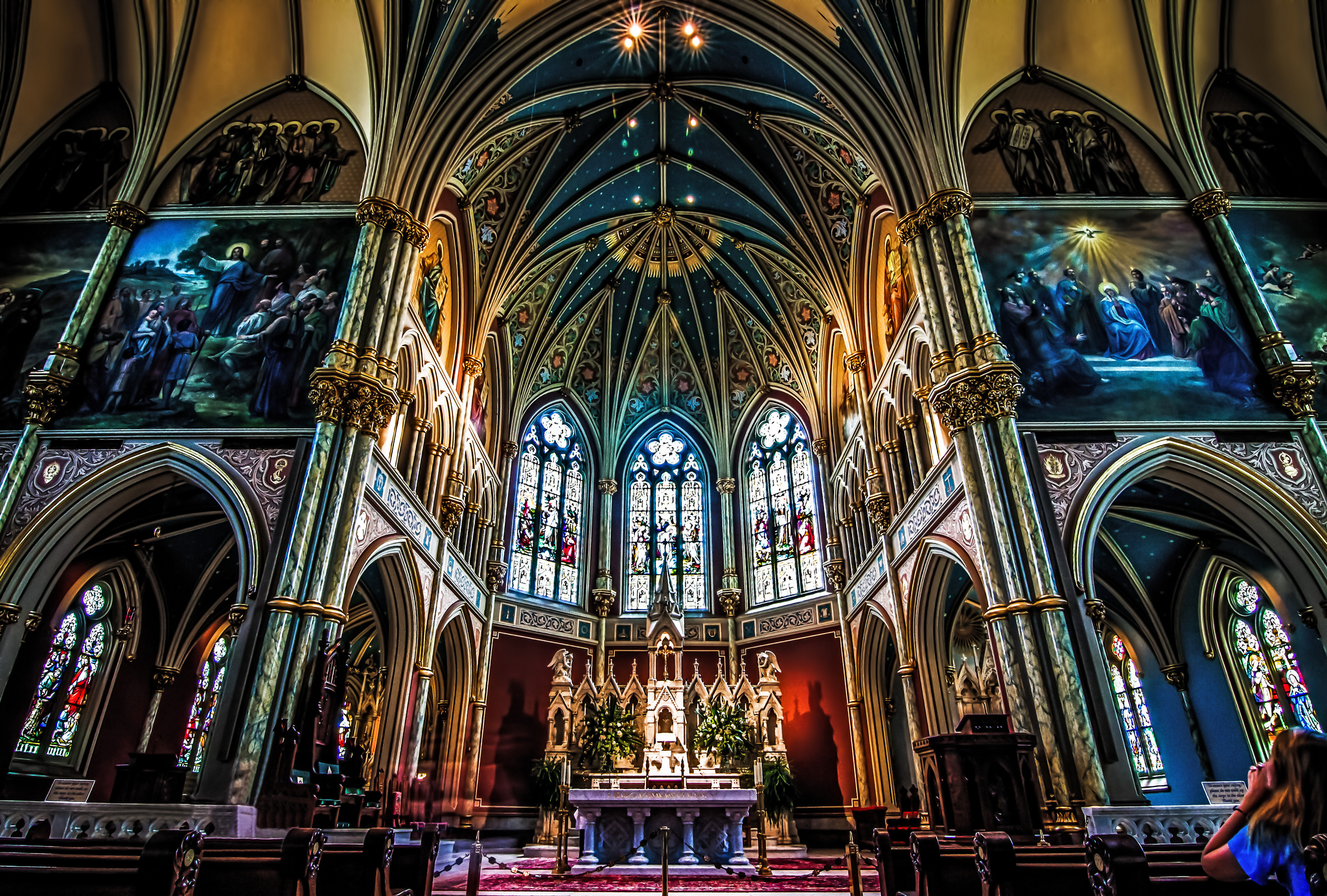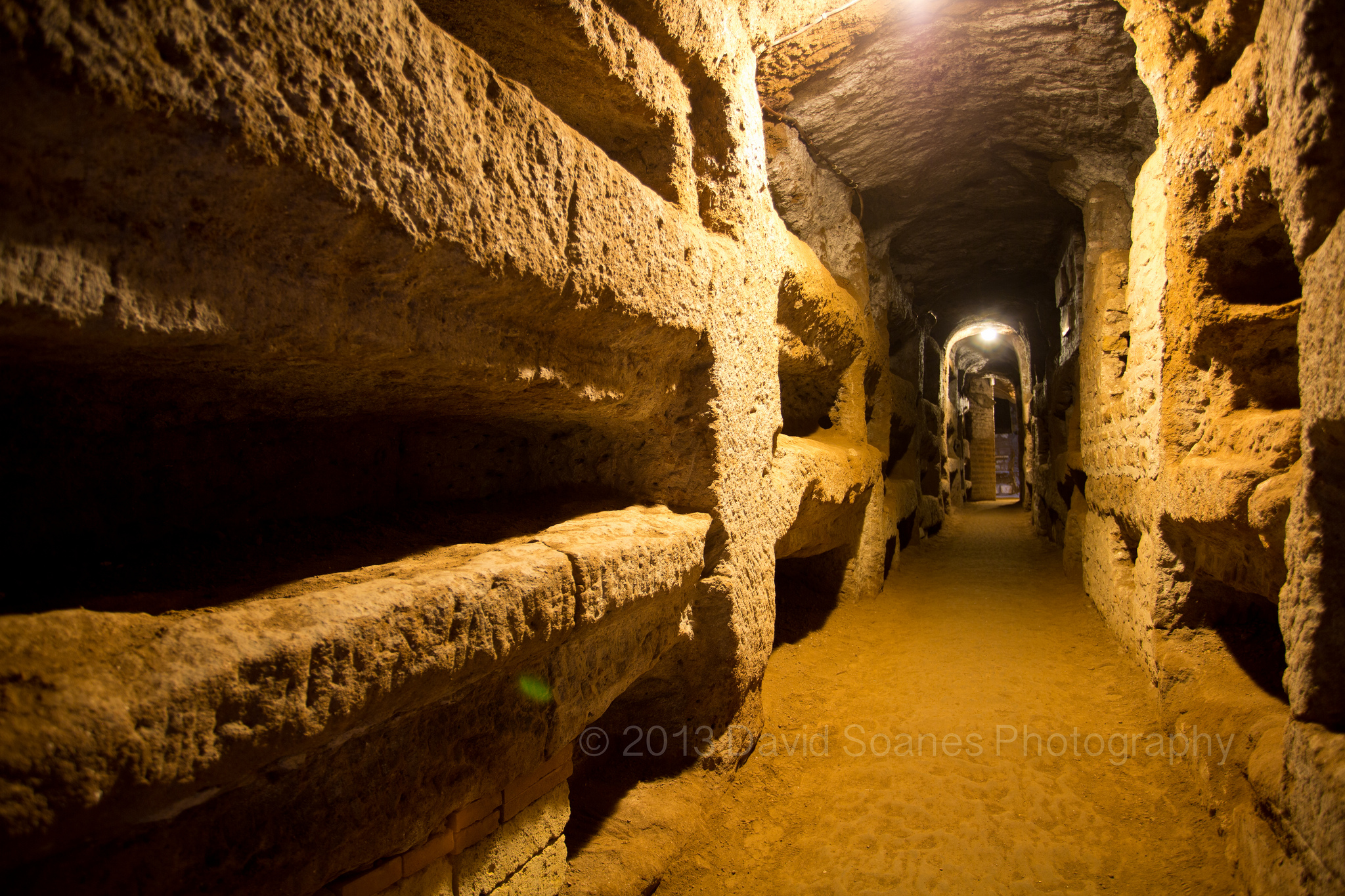
+St. Bernardine of Siena+
Over the past several years, the majority of questions posed by readers have involved how one is to conduct oneself among the Novus Ordo and Traditionalist sects regarding prayer in common with non-Catholics, attendance at and participation in weddings and funerals, sponsorship at Baptism, etc. When site revisions are completed, articles addressing these issues will be posted. In the meantime, a particular question has arisen that should be addressed to avoid any further confusion and speculation. After searching my library for days, a more definitive answer on this question has finally been located. It involves praying privately inside a pre-1958 Catholic church in order to make reparation for the false sacrifices offered there.
When questions like this arise, we cannot rely on a knee-jerk reaction to resolve them. While we may have the best of intentions, an opinion, however well-educated we think it might be, is not sufficient when we are dealing with matters that could involve serious sin such as communicatio in sacris. In these times when we have no clergy to approach for resolution of these cases the only thing we can do is to consult approved works written by valid pre-1959 clergy citing documents from the Roman Congregations and the Holy Office to provide a trustworthy answer to our questions. The selection below is taken from Questions and Answers II, Precepts, by Canon E. J. Mahoney, D.D., 1948, compiled from articles printed in the Clergy Review in Great Britain from 1931 to 1947:
“Titius is in the habit of entering the ancient cathedrals of this country, and other pre-Reformation churches now in Protestant hands, when no Protestant service is being performed, and there praying for the return of this country, and of the formerly Catholic shrine, to the faith. He is motived by thef acts (a) that this is in itself a good thing; (b) that at least some Catholic worship and reparation are thus offered in the desecrated shrine; and (c) that Catholics are encouraged at times to do this, e.g. the annual Catholic visit to the shrine ofSt Edwardat Westminster. On theother hand, he is aware of the possibility of scandal at being seen praying in a Protestant place of worship; also he is afraid there may be some positive prohibition of the practice, when not specially authorized by authority, as in the above case of St. Edward’s Shrine. What is to be answered?
“The principle is stated in an instruction of the Holy Office, given for the faithful of Kentucky, 13 January, 1818: An liceat Catholicis adire templa hareticorum?;Licere, si adeant merae curiositatis causa, absque ulla com- municatione in sacris, in qua talis aditus communiter habeatur pro actu protestativo falsae religionis; quandoquidem sicuti profana aedificia, sic et templa haereticorum adire, est actus per se indifferens; qui non nisi a pravo fine, vel ex circumstantiis efficitur malus. Malus nimirium efficitur: 1. Si quis ea adeat animo adsistendi sacris haereticorum functionibus; 2 . vel etiam sine tali animo, si ingressus ipse in haereticorum ecclesias aliquam inferat vel inferre videatur cum iisdem haereticis in divinis communicationem, hinc et scandali occasionem praebeat . . . . 4. vel utrumque communiter habeatur veluti tessera unius eiusdemque communionis catholicorum et acatholi- corum.’
“The reply is concerned chiefly with permitting such visits curiositatis causa, and I know of no definite instruction which covers exactly the point raised above. But it is clear, both from this text and from other instructions, that what is absolutely forbidden is communicating in the worship of heretics even though the prayers said contain nothing heretical. Therefore, the use of a building is indifferent. The Church even tolerates, for proportionately grave reasons the use for public Catholic worship of a building which belongs to non-Catholics or is used alternately by Catholics and non-Catholics, as for example the Church of the Holy Sepulchre in Jerusalem. Granted its intrinsic lawfulness, the question can be answered by applying the voluntarium indirectum principle to each individual case. The point to be examined is whether the possible scandal, or danger of perversion, is compensated by a proportionately grave cause justifying the practice.
“In the case of public Catholic worship in non-Catholic churches the permission of the Ordinary must be obtained, as is done, presumably, in the case of St. Edward’s Shrine, or in the case of Mass celebrated in the ruins of a monastic church. But an individual may arrive at a prudent decision, if necessary, by consulting a confessor, in determining the lawfulness of private prayer. If one may consider the generality of cases of this kind, it appears that, whereas it is the exception to tolerate the presence of a Catholic at non-Catholic religious rites, it would be rather the exception to prohibit the practice of private prayer in a pre-Reformation church. For it would only be in exceptional cases that any scandal or danger of perversion would arise. A recent convert, for example, in a cathedral town, should not be allowed to visit the cathedral for private prayer; there is danger of perversion. Likewise no Catholic should use a pre-Reformation church which is now devoted by Anglicans to a close imitation of “Roman” rites; there is possibility of scandal. Similarly, one should not visit a pre-Reformation church situated in one’s own parish; there would be danger of giving scandal to the Catholic population. But, apart from such cases, no bad result can usually be anticipated. On the contrary, it is good for the sacred building to be used occasionally by the faithful for whom it was erected, and I believe it is a fairly common practice for the clergy to recite their office in such churches” (end of Mahoney quote).
Comments
- Canon Mahoney discourages this practice if the pre-Reformation church in question is used for services “in close imitation of Roman rites.” Here I believe he is referring to high Anglicans who conform more closely with some Catholic rituals and even include some Latin in their services at times. This would apply to Traditionalist services far more than to the Novus Ordo, (but the services are not Traditionalist in this case but Novus Ordo). In other words, it would be prohibited to pray in any Traditionalist church. a) I do not think anyone believes the Novus Ordo rite can any longer be considered a “close imitation” of Roman rites. Mahoney also says there is only the “possibility” of scandal but who would be scandalized given our current situation today? b) As Rev. John R. Bancroft, C.S.S.R., J.C.B., S.T.L. reminds us in his 1943 CUA Canon Law dissertation, Communication in Religious Worship with Non-Catholics: “When the danger of perversion or scandal to the faithful is not to be feared, what is not illicit in itself may be tolerated more easily and priests should be cautious about forbidding what can never be permitted lest they disturb good faith without hope of fruit.” The Church herself declares that praying in such churches is not illicit and Canon Mahoney even deems it commendable. If even priests should be cautious in prohibiting such things, all the more so the laity in these circumstances.
- As far as praying in a church situated in one’s own parish, we have no such parishes per se any longer, and there are no fellow Catholics to scandalize.
- Taking scandal at such things is not the same as actually being scandalized in the proper sense. Taking scandal consists in thinking we see sin or offensive behavior where there is none. Fr. Frederick Faber writes in his Spiritual Conferences: “To give scandal is a great fault, but to take scandal is a greater fault. It implies a greater amount of wrongness in ourselves, and it does a greater amount of mischief to others” (https://www.fisheaters.com/ontakingscandal.html).
Rules of fraternal correction
Before becoming alarmed at what we believe to be sinful or offensive behavior, we need to make certain it is truly what we believe it to be and that we are obligated to address it. The following is taken from Moral Theology: A Complete Course Based on St. Thomas Aquinas and the Best Modern Authorities by John A. McHugh and Charles J. Callan, 1958:
- IT IS NOT OFTEN NECESSARY FOR ONE WHO IS NOT A SUPERIOR TO MAKE FRATERNAL CORRECTION, SINCE THERE ARE MANY CONDITIONS THAT MUST EXIST BEFORE ONE IS OBLIGED TO IT. These conditions include the purpose to be attained, of which we have just spoken, and the proper circumstances, which are as follows: (a) THE FAULT TO BE CORRECTED SHOULD BE A KNOWN AND SERIOUS SIN; (b) the person to give the correction should be one who has the right and duty to correct; (c) the manner of giving the correction should be such as will promote the end in view.
- ONE SHOULD NOT ATTEMPT TO CORRECT A FAULT, UNLESS ONE IS MORALLY SURE THAT A FAULT HAS BEEN COMMITTED OR IS ABOUT TO BE COMMITTED. For this reason the scrupulous, who are inclined to suspect or see evil where there is none, are generally excused from the duty of making corrections.
- Since fraternal correction is given for the purpose of converting a sinner from the evil of his ways, IT IS NOT CALLED FOR WHEN ONE’S NEIGHBOR IS NOT A SINNER, strictly speaking, or has already reformed. Thus, there is no need of this correction in the following cases: (a) WHEN A PERSON SINS THROUGH IGNORANCE AND IS NOT GUILTY OF FORMAL SIN; (b) when a person who was a sinner in the past has given up his old ways.
If the person is a superior with the obligation to correct, and is certain they are not afflicted with scruples, how can morally certainty be obtained in such cases? Primarily by consulting works that treat of the case at issue and following them. We are not allowed to correct another in such instances unless we are certain, based on the teachings of the Church, the approved canonists and doctors of sacred theology and the moral theologians, that they are sinning. This not only injures our neighbor and may even alienate him, but involves ourselves in sins against prudence and even more other serious sins as well.
And from here we head into a different but related issue that also has been making the rounds these days. If we wish to live in peace with our neighbor, to experience the fruits of a prayer apostolate and continuing study of the faith, we must avoid all those things the New Testament teaches regarding charity and love of the brethren. Unless we all purge ourselves of any inclination whatsoever to sins against charity, we will become nothing more than those eventually exiting and recreating the forever splintering Traditionalist sects. St. Thomas Aquinas, quoted by Revs. McHugh and Callan, explains the dangers of these sins below
Sins Against Peace (Summa Theologica, II-II, qq. 37-42.)
- Sinfulness of Unintentional Discord — (a) From its nature, this kind of discord is not opposed to charity, nor is it sinful; for the concord of charity consists in a union of wills, not in a union of opinions. Thus, the disagreement between Paul and Barnabas about John Mark (Acts, xv. 39) was not sinful, although the difference of judgment indicated their human limitations. (b) From its circumstances, this kind of discord may be sinful, as when it is caused by culpable ignorance in matters of faith, or is carried on with obstinacy.
- By whom is the sin of discord committed? (a) It is committed sometimes by one party only, as when one knowingly resists the will of another who wishes to perform a necessary act of charity. (b) It is committed at other times by both parties, as when each in defending his own good infringes knowingly on the charity due the other.
- 1355. Contention — Contention is discord carried into words or equivalent signs, (i.e., a dispute or altercation), in which one denies what the other affirms. It is divided as follows: (a) by reason of the intention, it is either an investigation of the truth, a defense of the truth, or an attack on the truth; (b) by reason of the manner in which it is conducted, it is either suitable or unsuitable to the persons and the matter in question.
- Contention whose aim is the discovery of the truth is lawful as follows. (a) Such contention is lawful and useful in itself, for it is a means of acquiring useful knowledge, of seeing both sides of a question, and of sharpening the mind for the refutation of error. Hence, a contest in a court of justice, a controversy in a scientific journal, a public debate on some important matter, and a theological disputation are according to their nature lawful, and may be necessary. (b) DEBATE IS UNLAWFUL IN ITS MANNER WHEN A DISPUTANT DOES NOT ARGUE ACCORDING TO THE RULES, APPEALS TO PREJUDICE OR IGNORANCE, USES AN INSULTING TONE OR UNPARLIAMENTARY LANGUAGE, ETC.
- The Sin of Contention — Contention is a sin when its aim is the concealment or discomfiture of the truth. (a) From its nature this kind of contention is a mortal sin, for it is the external expression of internal discord in matters about which charity requires concord and the same speech. Hence, the Apostle numbers contention among the works of the flesh that exclude from the kingdom of God (Gal, v. 20). (b) From the lightness of the matter or the imperfection of the consent, this kind of contention is very often, if not usually, only a venial sin, or no sin at all. Examples: A person argues against what he knows is true, but the matter is trivial (e.g., his weight); or he is distracted by the heat of dispute or the tactics of the other party.
- Mortal sin is not committed by contention, therefore, unless the truths against which one contends are of a serious kind. Such truths are: (a) truths of a religious or moral character, such as the doctrines of faith and the commandments of God; (b) natural truths of a universal character, the knowledge of which pertains to the perfection of the intellect, such as first principles; (c) natural truths of a particular character in which important rights are involved. Example: An historian who writes against some deservedly revered person of the past, or a lawyer who attempts to prove against an accused what he knows is not a fact, are guilty of the sin of contention.
- Hence, one may be defending one kind of truth and contending against another kind of truth at the same time. St. Paul, accordingly, makes the distinction between announcement of the truth out of charity and announcement of the truth out of contention (Philip, i, 15 sqq.). (a) The truth is defended out of charity when one does not use truth as a means for the defense of error; (b) it is defended out of contention when one makes use of it as a means for the propagation of error. Thus, while St. Paul was imprisoned at Rome in 61, certain personal enemies preached Christ, but at the same time spoke or hinted falsehoods against St. Paul in order to undermine his authority or add to the bitterness of his captivity. [To defend] the truth to make oneself appear different or better than one is, one speaks from contention.
- Ways in which one is guilty of the mortal sin of contention: (a) when one contends formally against the truth, that is, when one knows the truth and intends to overcome it or suppress it; (b) when one contends virtually against the truth, that is, when one is so bent on carrying one’s point that one does not care whether it is true or false. Thus, the Sophists aimed to win, right or wrong.
- When the aim of contention is the overthrow of error: (a) in itself, such contention is good and praiseworthy, and at times necessary; (b) by reason of circumstances, it may be a venial or a mortal sin. Examples: A dispute on a matter that is unbecoming, such as which of the disputants is greater (Luke, xxii. 24); dispute with greater warmth than the case requires; a dispute that leads to scandal or other evil consequences, as in religious controversies (I Tim., ii. 14).
While spending time with the conclavists, such discord and contention was rife and was actually encouraged by the group’s head. All of those involved, but especially the young, were truly scandalized by it and many of them lost their faith. To this day, those of us who were adults emerging from that sect deeply regret that we did not recognize it for what it was and immediately put an end to it. These sins against peace have been the cause among Traditionalists of family upheaval, economic hardship, lost children, divorce, ruined friendships, mental illness and much more. Therefore the axe needs to be put to the root of this evil tree before it bears any further bad fruits. If we did not speak out against it God would hold us accountable. For “It is better that scandals arise than the truth be suppressed.” -– Pope St. Gregory the Great






Thank you Teresa for the zeal and effort you put into the researching for this article. I learned quite a bit. A blessing to have those valuable resources you have in your library, even more so on on knowing how to aptly search them. Look forward to the future articles that will be coming. God Bless…..JWM
I learned quite a bit doing the research, too. I knew I had seen something on it long ago but couldn’t find the exact quote. Thanks so much for your kind words and hope we can all take something away from this.
It is so sad that there are such disagreements about finer points of doctrine or historical apparitions, etc., even among us who keep the Faith and Commandments and stay at home to pray, that we sometimes see only the trees and not the forest. Oftentimes we lose the big picture because we are worried about the minutiae. But salvation is the big picture, our own as much as our neighbor’s. Let’s not lose sight of that, in thinking we have the most orthodox view, at the expense of the charity owed to our neighbor. Just as it is good to give up a holy practice for the good of another, as The Imitation of Christ teaches us, so also it is good to not insist upon our own interpretation or opinion of things yet uncertain or unsettled by the Church.
Yes, just as with sermons and other spiritual reading we all must apply these things to ourselves first and foremost, for the salvation of our own souls. The only thing that separates us from those in schism is our willingness to sacrifice our own opinions to even just the opinions of the Church, because they are superior to our own. Many times, especially in the early days, I thought I had these great opinions, only to discover that to be in harmony with the Church, they had to go. I beg God to always provide the grace necessary to retract any such opinions or beliefs the moment they are proven to be wrong.
Thank you for your comment.